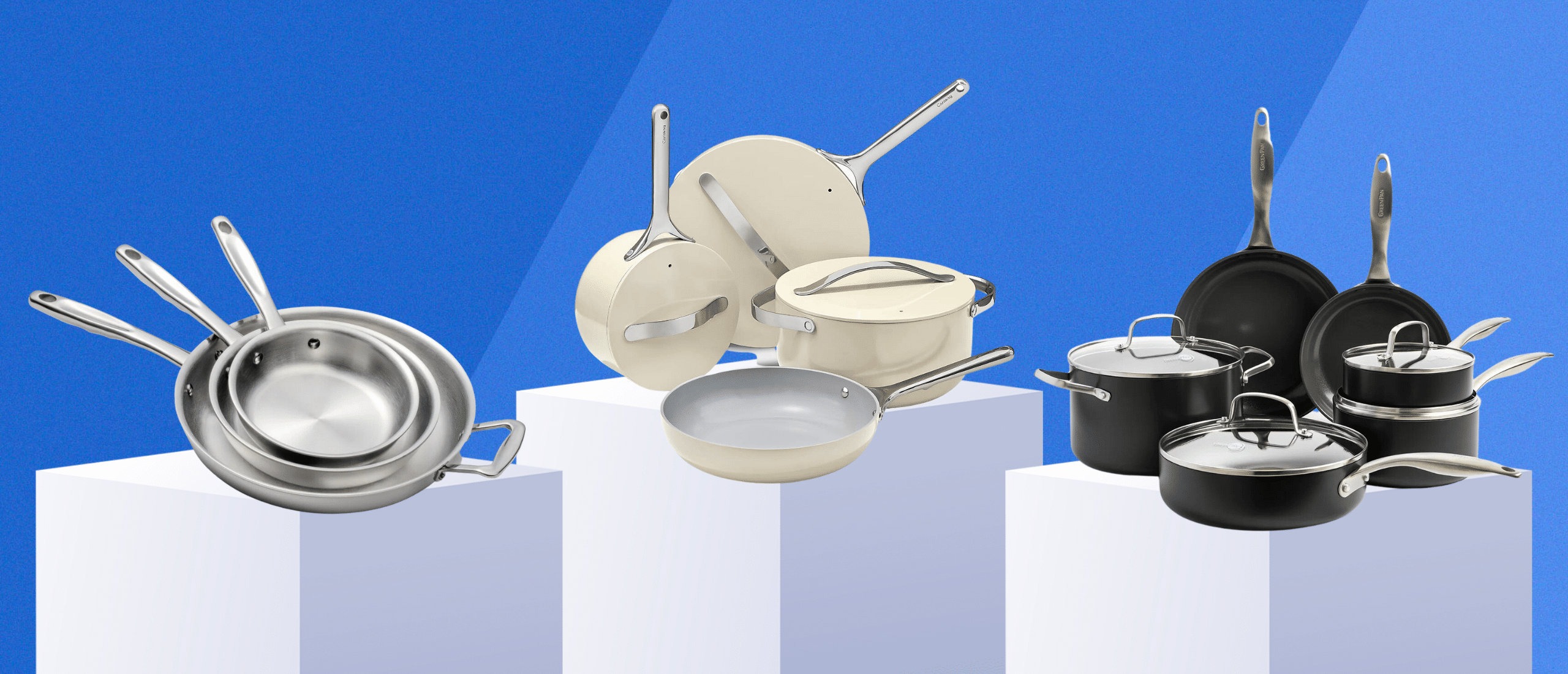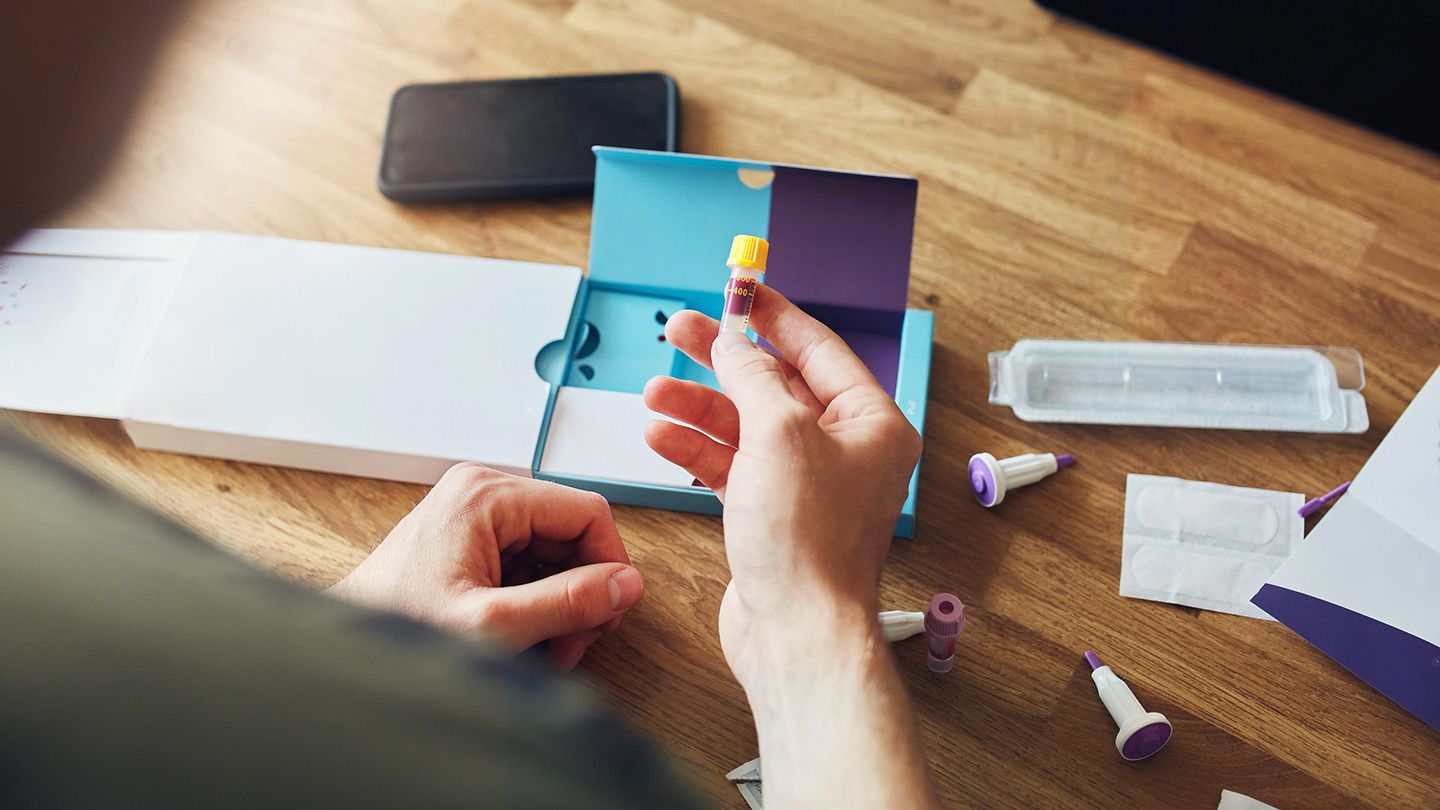Home>Misc>Featured>What Is The Safest Cookware For Your Health


Featured
What Is The Safest Cookware For Your Health
Published: September 14, 2023
Discover the safest cookware for your health with our featured selection. Find out which materials are non-toxic and ensure a healthy cooking experience.
Introduction
Welcome to the world of cookware! Whether you’re a seasoned chef or a culinary novice, having the right cookware is essential for creating delicious meals. However, with so many options available on the market, it can be overwhelming to choose the safest and healthiest cookware for your kitchen.
When it comes to cookware, safety is a top concern. We all want to ensure that the materials used to make our pots and pans do not release harmful chemicals or toxins into our food. That’s why in this article, we will explore some of the safest cookware options available, delving into their pros and cons, and providing insights on which ones are best for your health.
It’s worth noting that cookware safety goes beyond just the materials used. Factors such as durability, heat conductivity, and ease of cleaning are also important considerations. By providing a comprehensive overview of different types of cookware, we aim to help you make an informed decision and create a healthy cooking environment in your home.
So, let’s dive in and explore the world of cookware together!
Non-Stick Cookware
Non-stick cookware has gained popularity for its convenience and ease of use. These types of pots and pans have a coating that prevents food from sticking, allowing for effortless cooking and cleaning. The most common material used for non-stick coatings is polytetrafluoroethylene (PTFE), commonly known as Teflon.
Non-stick cookware offers many advantages. It requires less oil or fat for cooking, making it a healthier option for those watching their calorie intake. Additionally, the non-stick coating makes it easier to cook delicate foods like eggs and fish, as they slide right off the surface without sticking.
However, there are concerns about the safety of non-stick cookware. At high temperatures, the Teflon coating can release toxic fumes, including perfluorooctanoic acid (PFOA), which has been linked to adverse health effects. To minimize the risk, it is important to use non-stick cookware at low to medium heat and avoid overheating.
Recently, manufacturers have introduced ceramic-based non-stick coatings as a safer alternative to traditional Teflon. These coatings are free from PFOA and PTFE, offering a more environmentally friendly and non-toxic option. Ceramic non-stick cookware is durable, scratch-resistant, and easy to clean, making it a popular choice among health-conscious consumers.
When using non-stick cookware, it is crucial to handle it with care. Avoid using metal utensils that can scratch the coating and opt for wooden or silicone tools instead. Regularly inspect the condition of the non-stick surface and replace the cookware if the coating becomes damaged or starts to peel.
In summary, non-stick cookware can be a convenient and healthy choice if used correctly. Opt for ceramic-based non-stick coatings or ensure that traditional Teflon-coated cookware is used at low to medium heat to reduce the risk of harmful fumes. By following these guidelines and practicing proper maintenance, you can enjoy the benefits of non-stick cooking without compromising your health.
Stainless Steel Cookware
Stainless steel cookware has long been a staple in many kitchens due to its durability, versatility, and classic appearance. It is made by combining different metals, including iron, chromium, and nickel, to create a corrosion-resistant material.
One of the main advantages of stainless steel cookware is its ability to distribute heat evenly, ensuring consistent cooking results. It is also non-reactive, meaning it won’t interact with acidic or alkaline foods, preserving the taste and quality of your dishes.
In terms of safety, stainless steel is generally considered to be a safe option for cookware. Unlike non-stick cookware, stainless steel doesn’t require a coating that could potentially emit harmful fumes. It is an inert material that doesn’t leach any chemicals or flavors into your food.
However, it’s important to note that stainless steel itself is not a great conductor of heat. To overcome this limitation, many stainless steel cookware sets have an aluminum or copper core that enhances heat conductivity. This type of cookware, commonly known as “clad” or “tri-ply” cookware, provides the benefits of stainless steel while offering superior heat distribution.
When using stainless steel cookware, it’s advisable to use a lower heat setting compared to other materials, as this can help prevent food from sticking to the surface. Additionally, stainless steel can develop “hot spots” due to uneven heat distribution, so periodic stirring or adjusting the heat is recommended.
Cleaning stainless steel cookware is relatively easy, as it is dishwasher safe and can withstand the use of most cleaning agents. However, to maintain the shine and remove any discoloration, it’s best to hand wash the cookware using warm, soapy water and a non-abrasive sponge or cloth.
Overall, stainless steel cookware is a reliable and safe option for your kitchen. Its durability, versatility, and non-reactive properties make it a popular choice among professional chefs and home cooks alike. Invest in high-quality stainless steel cookware with an aluminum or copper core for enhanced heat distribution, and you’ll have a set of pots and pans that will last for years to come.
Cast Iron Cookware
Cast iron cookware has been used for centuries and is beloved for its exceptional heat retention and even heat distribution. This type of cookware is made by pouring molten iron into a mold, resulting in a durable and long-lasting product.
One of the main advantages of cast iron cookware is its ability to provide even cooking temperatures across the entire surface. This makes it ideal for tasks that require precise heat control, such as searing meats or baking evenly browned bread. Additionally, cast iron develops a natural non-stick surface over time, making it a popular choice for frying and sautéing.
In terms of safety, cast iron cookware is considered safe and non-toxic. It does not contain any harmful chemicals or coatings that can leach into your food. In fact, cooking with cast iron can even increase the iron content in your meals, which is beneficial for individuals with iron deficiencies.
However, there are a few considerations to keep in mind when using cast iron cookware. Firstly, it requires proper seasoning to maintain its non-stick surface and prevent rusting. Seasoning involves applying a thin layer of cooking oil and heating it to create a protective coating. Regular re-seasoning and proper cleaning are necessary to prolong the lifespan of your cast iron cookware.
Another aspect to consider is that cast iron cookware is heavy and can take longer to heat up compared to other materials. However, once it reaches the desired temperature, it retains heat exceptionally well, making it ideal for dishes that require extended cooking times or for keeping food warm on the table.
When it comes to cleaning cast iron cookware, it’s important to avoid using harsh detergents or scrubbers that can strip away the seasoning. Instead, use a stiff brush or scraper and hot water to remove any food residue. After drying the cookware thoroughly to prevent rust, apply a light coating of oil to maintain its seasoning.
In summary, cast iron cookware is a durable and versatile option for any kitchen. Its ability to provide even heat distribution and natural non-stick properties make it a favorite among professional chefs and home cooks. With proper seasoning and care, cast iron cookware can last a lifetime and become a treasured heirloom in your kitchen.
Ceramic Cookware
Ceramic cookware is becoming increasingly popular due to its non-toxic and eco-friendly nature. Made from natural materials such as clay, ceramic cookware offers a safe and healthy cooking option for your kitchen.
One of the main benefits of ceramic cookware is its non-reactive nature. It does not release any harmful chemicals or toxins into your food, ensuring the flavors and nutrients remain intact. Ceramic cookware is also free from common toxins found in other types of cookware, such as PFOA and PTFE.
In addition to its safety benefits, ceramic cookware is known for its excellent heat retention. It distributes heat evenly throughout the cooking surface, resulting in consistent and thorough cooking. This makes it suitable for a wide range of cooking techniques, from simmering and stewing to sautéing and searing.
Cleaning ceramic cookware is a breeze, as it typically has a non-stick surface that prevents food from sticking. This makes it easy to clean by hand with mild soap and water. However, it is important to note that ceramic cookware is more prone to chipping and cracking compared to other materials, so it is best to handle it with care and avoid sudden temperature changes.
It is important to choose high-quality ceramic cookware that is free from any heavy metals or contaminants. Look for brands that use natural, lead-free glazes and ensure that the cookware is labeled as food-safe. By making careful choices, you can enjoy the benefits of ceramic cookware while ensuring the safety of your meals.
Overall, ceramic cookware is a versatile and health-conscious option for your kitchen. Its non-reactive nature, excellent heat retention, and easy cleaning make it a favorite among those who prioritize safety and convenience in their cooking. Invest in high-quality ceramic cookware, and you’ll have a set of pots and pans that will serve you well for years to come.
Glass Cookware
Glass cookware is a versatile and safe option for every kitchen. It offers several benefits, including its non-reactive nature and ability to withstand high temperatures.
One of the main advantages of glass cookware is its transparency. This allows you to monitor the cooking process without lifting the lid, helping to maintain the integrity of your dishes. Glass cookware is also non-porous, meaning it won’t absorb odors, flavors, or stains from your food.
Glass is considered to be a safe and healthy option for cookware. It does not release any chemicals or toxins when heated, ensuring that your meals stay free from contamination. Glass cookware is also free from coatings or glazes that may contain harmful substances like PFOA or Teflon.
Another benefit of glass cookware is its versatility. It can be used in the oven, microwave, refrigerator, and freezer, making it ideal for storing leftovers or preparing meals in advance. Glass can handle extreme temperature changes, so you can transfer dishes from the freezer to the oven without worry.
When using glass cookware, it’s important to handle it with care to avoid breakage. Avoid placing hot glassware on cold surfaces or exposing it to drastic temperature changes, as this can cause the glass to crack or shatter. It’s also best to use oven mitts or potholders when handling hot glass cookware.
Cleaning glass cookware is straightforward, as it can be safely washed by hand or in the dishwasher. Unlike other materials, glass cookware doesn’t absorb flavors or stains, making it easy to keep clean and maintain its original appearance.
While glass cookware has many advantages, it’s worth noting that it is not the best conductor of heat. Glass takes longer to heat up and cools down more slowly than other materials. However, once at the desired temperature, it retains heat well, allowing for even cooking and preventing hot spots.
In summary, glass cookware is a versatile and safe option for your kitchen. Its transparency, non-reactive nature, and ability to withstand high temperatures make it a popular choice among home cooks. By handling it with care and following proper usage guidelines, you can enjoy the benefits of glass cookware for all your cooking needs.
Copper Cookware
Copper cookware has a long history of being favored by professional chefs and culinary enthusiasts for its exceptional heat conductivity and precise temperature control.
One of the most significant benefits of copper cookware is its excellent heat conductivity. Copper is known for its ability to distribute heat evenly and quickly across the entire cooking surface. This ensures that food cooks evenly, preventing hot spots and allowing for precise cooking control.
Another advantage of copper cookware is its responsiveness to temperature changes. Copper pans heat up and cool down rapidly, providing immediate adjustments when cooking delicate dishes or making sauces. This quick response time allows for greater control over the cooking process.
However, it’s important to note that copper cookware is often lined with a different material, such as stainless steel or tin, to prevent food from coming into contact with the copper. This lining ensures that there is no reactivity between the copper and acidic or alkaline foods.
Copper itself is a reactive metal, meaning it can potentially leach into the food and impact its taste. The lining in copper cookware acts as a barrier and provides a safe cooking surface. However, over time and with heavy use, the lining may wear off and require repair or replacement.
Maintaining copper cookware requires regular polishing to maintain its shine and prevent tarnishing. Copper can develop a patina over time, which is a natural and harmless oxidation process. While some chefs embrace the patina for its aesthetic appeal, others prefer to keep the copper cookware polished to its original shine.
It’s worth mentioning that copper cookware is not suitable for all types of stovetops. Copper is an excellent conductor of heat but can also react with certain metals, causing damage or irreparable stains on ceramic or glass stovetops. It is best suited for use on gas or electric stovetops.
In summary, copper cookware offers professional-level heat conductivity and precise temperature control, making it an excellent choice for cooking enthusiasts. With proper maintenance and care, copper cookware can last for generations and become treasured heirlooms in your kitchen.
Conclusion
Choosing the safest cookware for your health is an important decision. By understanding the various options available and their pros and cons, you can make an informed choice that aligns with your cooking preferences and safety concerns.
Non-stick cookware provides convenience and easy cleanup, but it is important to use it at low to medium heat to minimize the risk of releasing harmful fumes. Consider opting for ceramic-based non-stick coatings as a safer alternative.
Stainless steel cookware offers durability and even heat distribution, with no concerns of chemicals leaching into your food. Look for high-quality stainless steel with an aluminum or copper core for enhanced heat conductivity.
Cast iron cookware is prized for its excellent heat retention and natural non-stick surface. With proper seasoning and care, it can provide a safe and versatile cooking experience.
Ceramic cookware is non-reactive and free from toxic coatings, making it a safe and eco-friendly choice. Look for high-quality ceramic cookware that is labeled food-safe and handle it with care to avoid chipping or cracking.
Glass cookware is transparent, non-reactive, and versatile. It can be used in various cooking methods and is easy to clean. However, it may not be the best conductor of heat.
Copper cookware offers exceptional heat conductivity and temperature control, but it requires a lining to prevent reactivity with food. Regular maintenance and choosing the right stovetop are necessary for proper use.
In the end, the safest cookware for your health depends on your individual needs, preferences, and cooking style. Consider factors such as heat conductivity, reactivity, and maintenance requirements when making your choice. Invest in high-quality cookware and follow proper usage guidelines to ensure both the safety of your meals and the longevity of your cookware.
By selecting the right cookware and practicing safe cooking habits, you can create delicious and healthy meals for yourself and your loved ones for years to come.









